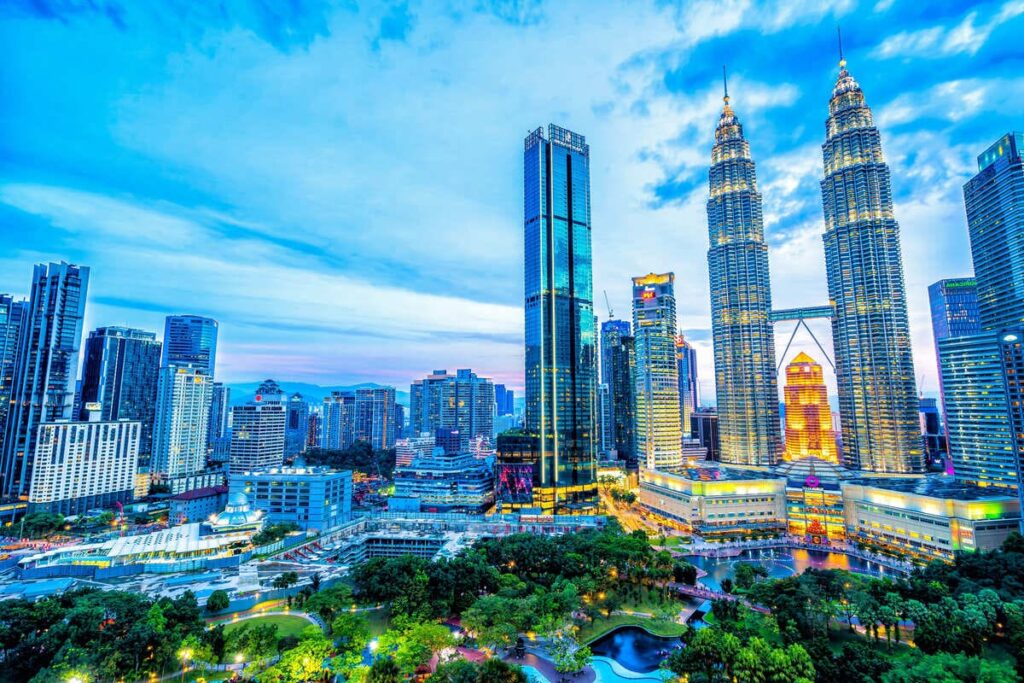Travel Guide
Affordable Cities & Vibrant Culture: Why Digital Nomads Are Flocking To This Unexpected Asian Country
Last Updated
It’s no secret digital nomads love Thailand for its unmatched social scene, Indonesia for that slow-paced island lifestyle, and Japan for its incredible infrastructure, but it seems that, all along, there’s been an equally fascinating country waiting in the wings, ready to take center stage:
An economic powerhouse in Southeast Asia, Malaysia has seen a surprising 100.3% increase in applications for Digital Nomad Visas (or DNVs) under its DE Rantau Program, not to mention the predicted 27.3 million international arrivals by year’s end.
Be it occasional travelers or remote workers, it’s certainly captured the Western gaze, and its fast internet, affordable cities, and unique cultural landscape are to thank for:


Here’s Why Nomads Love Malaysia
To begin with, Malaysia is home to some of the best-equipped nomad hubs anywhere in Asia, starting with Kuala Lumpur, its diverse, landmark-packed capital, where multiple ethnic communities live, and mosques, pagodas, and innovative skyscrapers all stand side by side.
Its trendy Bangsar district is a favorite among digital nomads due to the high concentration of laptop-friendly eateries, as is the more residential, laid-back Hartamas, home to a well-established expat scene, and Mont Kiara, right in the center, dotted with cozy cafes and coworking spaces.


When it comes to attractions, Kuala Lumpur is one of Asia’s best offers, offering a plethora of night markets where you can sample local cuisine at negligible prices, centuries-old temples, and lush urban parks providing some respite when the fast-paced city life gets a little too overwhelming.
Life In Malaysia Beyond Kuala Lumpur
Kuala Lumpur is merely the tip of the iceberg:
As seen on Nomads, the largest platform for tracking digital nomad trends in the world, remote workers are also flocking to a bustling Kota Kinabalu, a port city backed by a verdant rainforest on the island of Borneo.


Dominated by a waterfront City Mosque and being within proximity of unspoiled beaches and beautiful nature trails, it lies somewhere between the cosmopolitan appeal of Kuala Lumpur and Borneo’s undeveloped charm.
Then there’s George Town, the capital of Penang Island, characterized by its British colonial buildings, Chinese markets, and verdant hills; Teluk Bahang, a laid-back coastal town fringed by turquoise waters, also in Penang, and an up-and-coming Malacca:


An unsung cultural gem, it sits on the southwestern coast of Malaysia, close to beaches and traversed by a Chinese-built Jonker Street, flanked with antique shops and food stalls, and it’s a more offbeat alternative to Kuala Lumpur’s crowded conurbation.
Malaysia Is More Developed Than Average
Part of the reason why Malaysia has been surging in popularity with nomads recently, particularly Westerners, is how surprisingly developed it is compared to its Southeast Asian counterparts.


Granted, it’s still some years behind Japan and maybe some decades behind a futuristic Singapore, but if you feel the confusing traffic rules, or the lack thereof, of Vietnam and the widespread ghettoization in parts of Bali are too much to bear, you’ll find that Malaysia is much more to your liking.
In comparison, cities like Kuala Lumpur and George Town feel much cleaner, and their good public transportation systems, green areas, and pedestrian-friendly centers offer natives and guests alike a higher quality of life without the Tokyo prices.
Less poverty, less urban issues:


The country as a whole feels very safe, with lower levels of crime than in other developing nations: according to the U.S. State Department, it is a Level 1 destination, meaning it’s about as low-risk as Switzerland, Norway, Finland, and the like are.
How Affordable Is Malaysia?
On top of that, Malaysia is cheap if you’re an American or European: the Malaysian Ringgit is weaker than the U.S. dollar, the euro, or the British pound, and five bucks here will get you a lot further than in the States.


To be more specific, with five dollars, you can order a sizable portion of Nasi Lemak, the national Malay dish consisting of fragrant coconut rice, fried anchovies, peanuts, cucumber, and hard-boiled eggs, topped with a sambal sauce, for around $4.48 in an inexpensive restaurant.
If it’s a special occasion and you’re getting some Char Kway Meow (stir-fried flat rice noodles with shrimp, eggs, and bean sprouts) and Roti Canai (flatbread dipped in lentil curry) on the side and a drink, expect to pay $27.98 on average in Kuala Lumpur.


Staying long-term and worried about Airbnb rates? No need to get yourself all worked up: month-long rentals in Kuala Lumpur start at a shockingly cheap $444 for a private room or $638 for a fully-equipped, airy studio.
You’re enamored with Penang and would rather stay somewhere more tropical, and by the seaside preferably? Rooms in George Town range from $398 to $462, and if you’re scared of dipping into those savings, this stunning seafront condo overlooking the Indian Ocean will set you back by $1,134.
Just in case, you know, you want to treat yourself a little, considering how cheap everything else is.


This is how much you’ll be spending roughly per month in Malaysia’s top five destinations as a digital nomad, as listed on Nomads based on their popularity:
- Kuala Lumpur – $1,348
- Kota Kinabalu – $1,335
- George Town (Penang) – $1,017
- Ipoh – $1,591
- Langkwai – $1,338
Malaysia Welcomes Digital Nomads
Finally, Malaysia is only one of a handful of Asian countries to have formally launched a Digital Nomad Visa through their DE Rantau program:


Digital freelancers and remote workers who are able to prove their source of income originates from digital activities and who are able to show sufficient funds for life in Malaysia by having enough money in their account or presenting their last 3 bank statements are eligible to apply.
Other specifications include having a minimum of 6 blank pages on your passport, so if you’re a country-hopper, you might want to double check before applying, and if needed, get a new passport ahead, and being of good character:
In sum, criminals are not welcome.


The Malaysian DNV is valid for stays of up to 12 months, renewable for an additional 12, at the discretion of immigration authorities, and you may bring your spouse and children.
Apply for the Malaysian DNV here.
Alternatively, if you don’t plan on staying in Malaysia for longer than 3 months, you’re still welcome to stay in the country as a tourist: U.S. passport holders do not need any kind of visa to travel to Malaysia for short stays, provided they inform authorities at the border they’re entering as tourists.
↓ Elevate Your Travel↓
Sign Up Now For Travel Off Path Premium! No ads, VIP Content, Personal Travel Concierge, Huge Savings, Daily Deals, Members Forum & More!


✈️Join Our Travel Off Path Community Forum: Where travelers unite, ask questions, share experiences and even find like-minded travel buddies!
SUBSCRIBE TO OUR LATEST POSTS
Enter your email address to subscribe to Travel Off Path’s latest breaking travel news, straight to your inbox.
This article originally appeared on TravelOffPath.com
Opinions expressed here are the author’s alone, not those of any bank, credit card issuer, hotel, airline, or other entity. This content has not been reviewed, approved or otherwise endorsed by any of the entities included within the post.

